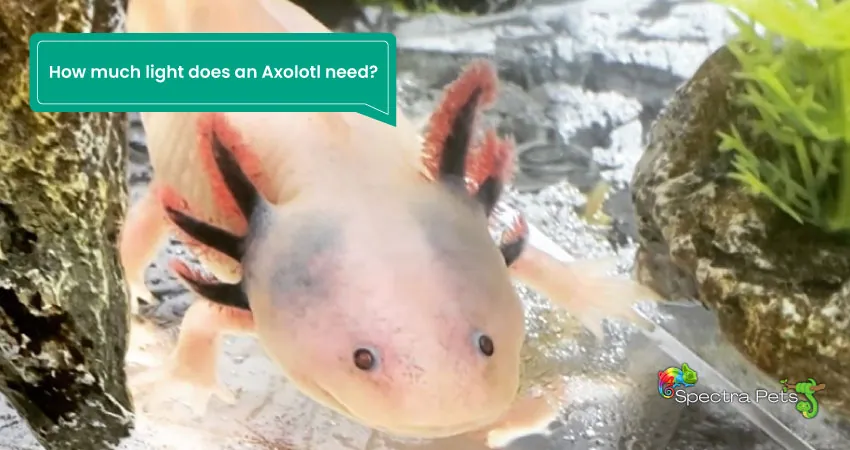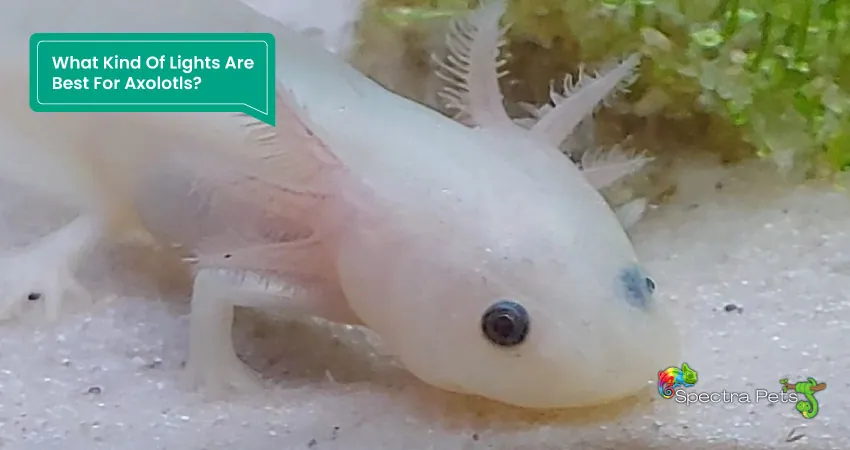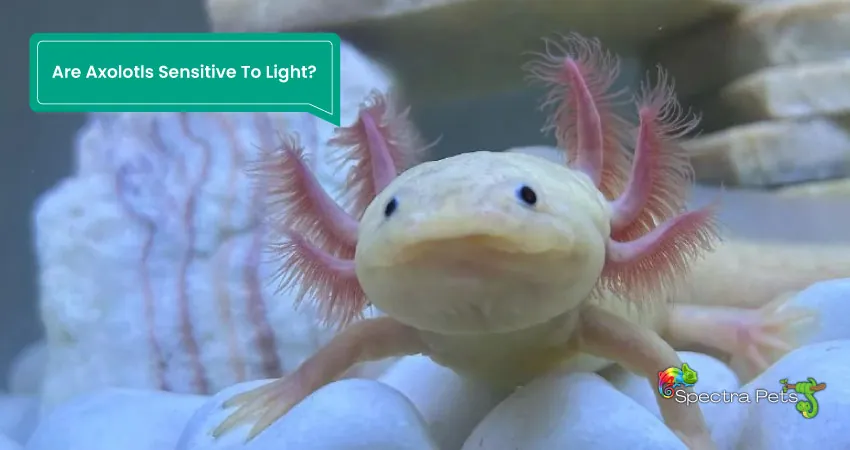As an aquarium enthusiast, you may have a strong desire to create the perfect environment for your pets, including axolotls. Lighting is an important aspect of aquarium design, and there are numerous options available in the market that can benefit various marine creatures.
But when it comes to axolotls, you may wonder if these quirky salamanders need specialized lighting in their tank.
While axolotls are primarily active at night and prefer dimly lit surroundings, they are able to thrive without a lot of light. However, there is more to consider in the matter of lighting for axolotls.
In this article, we will explore the lighting needs of axolotls and the impact it has on their health, behavior, and overall wellbeing. Whether you’re just starting out or looking to optimize the environment for your axolotls, this guide will provide you with all the information you need.
Why Do Axolotls Actually Need Light?

So far, you may think, well, axolotls do not require any lights at all!
Well, that’s not quite accurate. While it is in fact true that axolotls can get around with little to no light at all, lighting in the aquarium is still important for various other reasons! Let’s have a look at these potential reasons:
- Watching the Aquarium: how are you supposed to see the aquarium you’ve worked hard on without any sort of lighting? You must include some lighting in your aquarium to enjoy it to its fullest, as the axolotls, fish, and other tank mates swim around.
- Day-night cycle: I’m pretty sure you’re already aware of how important a proper day-night cycle is for any living being. The same goes for axolotls as well. If you have placed your aquarium in a darker corner of your house to avoid direct sunlight, you must include some subtle lighting in the tank.
- Growth of live plants: if you have included any sort of live plants in the aquarium, then it’s also essential to provide some lighting in the tank to ensure their growth.
Now that you know the importance of lighting, let’s look at the possible options to light an axolotl aquarium.
How much light does an Axolotl need?

So, how much light does an axolotl actually need?
To be frank, not much, really. These amphibians are mostly active at night, when they love to relax in the cold water. In their natural habitats, they get very little light (since they are mostly nocturnal) and still manage to get around and catch prey. So, a dimly lit environment is good enough for these walking fish to do perfectly fine.
Stress and sleep disruption are two negative effects of too much light on axolotls, and if the light is coming from the sun, it may heat the tank temperatures beyond what the axolotl prefers.
Sudden bright flashes of light will also scare and induce stress in the axolotl. In such situations, it will hide. A stressed animal may show a lack of appetite or other signs of illness.
What Kind Of Lights Are Best For Axolotls?

First, you need to keep in mind that any light source produces heat, and axolotls are very sensitive to increased temperatures just as much as bright lights. The lights also need intensity adjustments, as you will need brighter light in certain situations.
It is also very helpful to have a light with an automatic timer, so that you manually don’t have to turn the lights on and off for the day-night cycle.
Therefore, the best choice to make here are lights that produce very low amounts of heat, and come with brightness control and a timer.
Finding such lights can be a real hassle, though. Most aquarium lights come only with a power button that turns them either on and off, and have no additional features.
What you can do is get some remote-controlled LED lights. They require very low power, do not produce much heat, and the brightness can easily be adjusted with the remote.
There are many options available. My personal choice would be the Finnex Planted+ 24/7 LED KLC Aquarium LED Light. Even though it’s not the cheapest, it has all the features I’ve mentioned above, and is very versatile.
You can also bring in aquarium decorations that provide hiding spaces for your pets. This way, they can hide away from the light if they want.
Finally, if you’re getting any live plants for your axolotl aquarium, get ones that don’t require much light to grow, such as anubias, water wisteria, or java fern.
Read Next: Do Axolotls Need A Heater?
Are Axolotls Sensitive To Light?

You may initially ask whether these goofy little creatures are sensitive to light.
Axolotls are known to get startled easily. And, because of their nocturnal nature, their eyes are underdeveloped. In terms of biology, they are also devoid of eyelids and all other forms of light protection. This makes them highly sensitive to bright light.
These amphibians also have poor eyesight at birth, which can be exacerbated by bright lighting conditions.
Frequently Asked Questions (FAQs)
Do Axolotls need a Heat Lamp?
Can Axolotls handle LED Lights?
Do Axolotls need UV light?
Do Axolotls need Darkness to sleep?
Does red light bother axolotls?
Do blue lights hurt axolotls?
Are black lights bad for axolotls?
Wrapping Up
Your axolotl will be much happier if you provide it with as little artificial lighting as possible.
Natural sunlight is the best for this goofy amphibian, and placing the tank somewhere where there is indirect sunlight is the best option. Do not put the aquarium in direct sunlight, as it will heat the water temperature up beyond the tolerance level of your lovely pet.
If you have plants, then just sunlight won’t suffice. You’ll need an additional LED lamp to ensure the growth of the plant.
